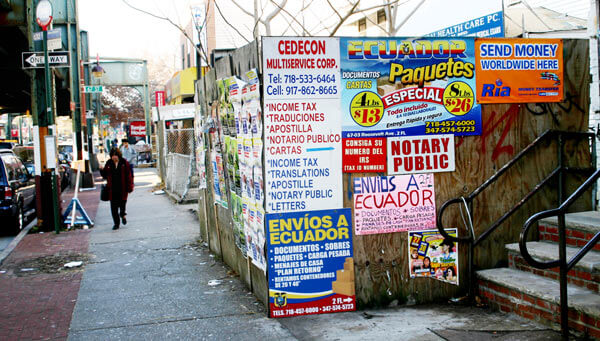By Rich Bockmann
At an empty construction site along Roosevelt Avenue in Woodside, plans to erect a five-story residential/commercial building have been stalled since 2009, one of 165 properties across the borough that have remained in limbo over the past five years.
And while shelved projects in Brooklyn and Manhattan are increasingly finding new life, the number in Queens — which has the second highest number of stalled sites in the city — has shown little improvement over the past year, according to a new study.
The borough had 164 stalled construction sites as of November, down less than 3 percent from a year earlier, according to a study released last week by the New York Building Congress.
Brooklyn, which has the second-highest number of stalled sites, saw a drop of 17 percent while Manhattan’s plummeted 26 percent and Staten Island’s fell 10 percent. The Bronx was the only borough to see an increase in stalled construction sites, up 65 percent.
“In our annual construction forecast report released in October, we estimated that residential construction spending will double between 2012 and 2015,” New York Building Congress President Richard Anderson said. “That rosy outlook was based largely on the fact that a number of luxury developments, which were shelved during the Great Recession, have come roaring back to life.”
According to the Building Congress, the city’s overall 12 percent drop was highlighted by a number of large-scale projects in Manhattan, where the number dipped below the 100-stalled-sites mark for the first time in more than three years.
In Queens, about 40 percent of the sites are planned for residential projects, while another 48 percent are listed as vacant, meaning the developers have acquired the land and obtained construction permits but have not started work.
In early 2009, the city Department of Buildings created a Stalled Sites Unit to track stalled construction, and later that year the city passed legislation that allows developers to keep their permits active while maintaining safety conditions on their sites.
Work permits lapse if construction at a site is suspended for more than a year, but under the stalled sites program owners and developers can renew their permits for up to four years if they create in-depth safety plans for their sites.
Anderson said the sites have the potential to play a role in Mayor-elect Bill de Blasio’s agenda to make the city a more affordable place to live.
“While the numbers are certainly moving in the right direction citywide, there’s still plenty of work to do in terms of activating construction at hundreds of long-dormant sites, especially in the city’s outerboroughs,” Anderson said. “Mayor-elect Bill de Blasio has vowed that housing will be a priority for his administration. This list of stalled sites might be the perfect place to begin.”
Reach reporter Rich Bockmann by e-mail at rbockmann@cnglocal.com or by phone at 718-260-4574.



































